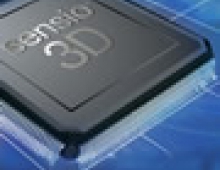
DVD Forum Approves Dual-layer Standard for Recordable HD DVD
The DVD Forum has published the latest resolutions announced in the 31st meeting of its most significant organization, the Steering Committee. The specifications of the forthcoming dual-layer recordable HD DVD (HD DVD-R DL) format as well as the 6/8-X recording speed for DVD-R DL and 16x for DVD-RAM were approved.
In the HD-DVD part, the DVD forum decided to adopt an aggressive strategy in promoting the HD-DVD as the next generation format for HD content worldwide and especially in new markets like China. The goal of this decision is to allow the members of the Steering Committee to study and find ways to collaborate with Chinese manufacturers and laboratories their aim being to establish the next generation DVD.
In addition, the specifications of the recordable dual-layer HD-DVD "HD DVD-R for DL Part 1 ver.1.9" were approved.
The organization also approved the "Optional Specifications 1X-SPEED HD DVD-R for DL Part 1 rev. 0.9", which include the parameters of recording HD DVD-R DL at the 1x speed.
Moreover, the DVD Forum decided to proceed with settling on the specifications for the re-writable version of HD DVD format.
As far as the DVD partis concerned, the Committee approved the upgrade of the DVD video recording standard (Ver.1.2 from Ver.1.1), besides the approval of the 6/8-X recording speed standard for DVD-R DL and the 6/8/12/16X recording speed for DVD-RAM. Both latter specifications have been already adopted by various hardware manufacturers like Pioneer and Panasonic.
The complete report is available at www.dvdforum.org.
Note that the approval of the various specifications does not mean a simultaneous implementation of them in hardware. So far, the latest developments in the HD DVD-R technology have been coming from Toshiba, the main backer of the HD DVD format.
In a joint project with Clariant, the Japanese company has managed to develop a 30GB dual-layer HD DVD-R disk based on organic dyes. Clariant and Toshiba developed advanced functional organic dyes for both recording layers L0 and L1 required in dual-layer disks. The dyes are claimed to offer very high reflectivity, good transmittance, high thermal conductivity, as well as the high sensitivity required for this technology.
With 15GB for a single-layer disk and 30GB for dual-layer disks, the new HD DVD-R can hold more than a 4-hour high-definition movie.
Both DVD and HD DVD are based on the same disk structure, back-to-back bonding of two 0.6-millimeter-thick substrates, allowing thus the already existing DVD-R manufacturing equipment to be switched to HD DVD-R production.
In addition, the specifications of the recordable dual-layer HD-DVD "HD DVD-R for DL Part 1 ver.1.9" were approved.
The organization also approved the "Optional Specifications 1X-SPEED HD DVD-R for DL Part 1 rev. 0.9", which include the parameters of recording HD DVD-R DL at the 1x speed.
Moreover, the DVD Forum decided to proceed with settling on the specifications for the re-writable version of HD DVD format.
As far as the DVD partis concerned, the Committee approved the upgrade of the DVD video recording standard (Ver.1.2 from Ver.1.1), besides the approval of the 6/8-X recording speed standard for DVD-R DL and the 6/8/12/16X recording speed for DVD-RAM. Both latter specifications have been already adopted by various hardware manufacturers like Pioneer and Panasonic.
The complete report is available at www.dvdforum.org.
Note that the approval of the various specifications does not mean a simultaneous implementation of them in hardware. So far, the latest developments in the HD DVD-R technology have been coming from Toshiba, the main backer of the HD DVD format.
In a joint project with Clariant, the Japanese company has managed to develop a 30GB dual-layer HD DVD-R disk based on organic dyes. Clariant and Toshiba developed advanced functional organic dyes for both recording layers L0 and L1 required in dual-layer disks. The dyes are claimed to offer very high reflectivity, good transmittance, high thermal conductivity, as well as the high sensitivity required for this technology.
With 15GB for a single-layer disk and 30GB for dual-layer disks, the new HD DVD-R can hold more than a 4-hour high-definition movie.
Both DVD and HD DVD are based on the same disk structure, back-to-back bonding of two 0.6-millimeter-thick substrates, allowing thus the already existing DVD-R manufacturing equipment to be switched to HD DVD-R production.


















